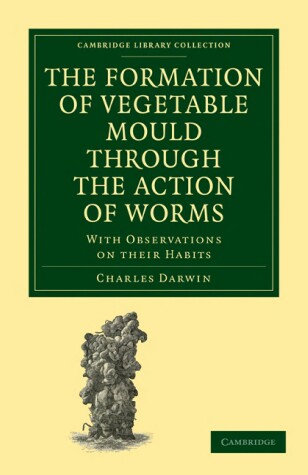Cambridge Library Collection - Earth Science
4 total works
Published in 1842, this important monograph by Charles Darwin (1809-82) formed the first part of a trilogy of geological studies based on observations made during the celebrated second voyage of the Beagle. Influenced by Charles Lyell's Principles of Geology, Darwin drew in particular on data from the survey of the Keeling Islands in the Indian Ocean to support his theory that subsidence of the ocean floor can account for the formation of coral atolls. He first presented his findings in a paper for the Geological Society of London in 1837, but a heavy workload and illness delayed the appearance of this elegantly argued and illustrated study. For this and his work on barnacles, Darwin would receive the Royal Society's royal medal in 1853. The other studies in the trilogy, Geological Observations on the Volcanic Islands (1844) and Geological Observations on South America (1846), are also reissued in this series.
The Formation of Vegetable Mould through the Action of Worms
by Charles Darwin
Published 1 October 1985
This book, published in 1881, was the result of many years of experimentation and observation by Darwin in the open-air laboratory of his garden at Down House in Kent. As he wrote in his introduction, the subject of soil disturbance by worms 'may appear an insignificant one, but we shall see that it possesses some interest'. He goes on to demonstrate the immensity – in size and over time – of the accumulated tiny movements of soil by earthworms, and their vital role in aerating the soil and breaking down vegetable material to keep the topsoil, the growing medium for all plant life and thus vital to human existence, fertile and healthy. At a time when there is huge interest in growing food organically and without using artificial fertilisers, Darwin's insights are as important, and his descriptions of his experiments as fascinating, as they were in the late nineteenth century.
First published in 1846, Darwin's Geological Observations made up the third part of his memoir of his voyage on the Beagle during the years 1832-1836. While the first part (1842) focused on the structure and distribution of coral reefs and the second (1844) described the volcanic islands visited during the voyage, this third instalment is devoted exclusively to South America, where Darwin spent the longest period of the expedition. It discusses South America's geological and seismic history, the mineral content of lava and granite, and the deformation of metamorphic rock. Separate chapters cover different geographical areas, and topics include the formation of the East and West Coasts and the pampas, the plains and valleys of Chile, and the structure of the Cordillera. Geological Observations also includes detailed maps of South America and sketches of the terrain.
Geological Observations on the Volcanic Islands, Visited During the Voyage of HMS Beagle
by Charles Darwin
Published 2 June 2011
Charles Darwin (1809–1882) published Observations on the Volcanic Islands in 1844. It is one of three major geological works resulting from the voyage of the Beagle, and contains detailed geological descriptions of locations visited by Darwin including the Cape Verde archipelago, Mauritius, Ascension Island, St Helena, the Galápagos, and parts of Australia, New Zealand and South Africa. Chapter 6 discusses the types of lava found on different oceanic islands. There is an appendix of short contributions by two other scholars: descriptions of fossil shells from Cape Verde, St Helena and Tasmania by G. B. Sowerby and of fossil corals from Tasmania by W. Lonsdale. The book is illustrated with woodcuts, maps and sketches of specimens. It provides valuable insights into one of the most important scientific voyages ever made, and the development of Darwin's ideas on geology.



